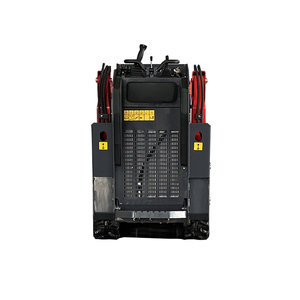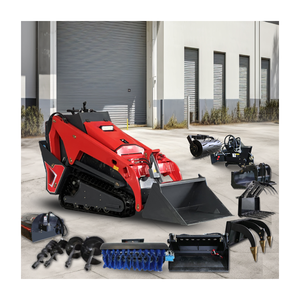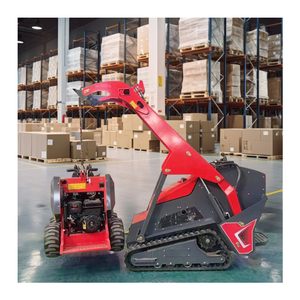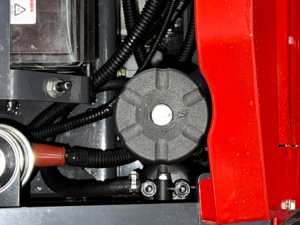
All categories
Featured selections
Trade Assurance
Buyer Central
Help Center
Get the app
Become a supplier

(19087 products available)








































Market Overview: The engine controller loader market is experiencing transformative growth, fueled by the rapid electrification of vehicles and the increasing demand for fuel-efficient solutions. The automotive engine management system market size is projected to grow from $57.9 billion in 2023 to $60.39 billion in 2024, representing a moderate CAGR of 4.3%, according to Research and Markets. This growth is driven by stringent emission regulations and rising consumer awareness of environmental issues. Additionally, the shift towards hybrid and electric vehicles is reshaping consumer behavior, as manufacturers seek to integrate advanced engine management systems that enhance vehicle performance while reducing emissions. This trend is expected to expand further, with the market anticipated to reach $72.42 billion by 2028 at a CAGR of 4.6%.
Industry Insights: Major players in the engine controller loader segment, including Robert Bosch GmbH and Denso Corporation, are focusing on innovation to maintain competitive advantages. The integration of advanced sensors and AI technologies plays a crucial role in optimizing engine performance and enhancing fuel efficiency. Moreover, the market is witnessing a notable shift toward lightweight materials and innovative designs to improve overall vehicle efficiency. The Asia-Pacific region is expected to dominate, driven by increasing urbanization and rising disposable incomes. As companies adapt to evolving regulations and consumer preferences, the engine controller loader market is poised for significant expansion, with a focus on sustainability and technological advancements shaping the future landscape.
Generally, the engine controller loader is a crucial part of the vehicle engine management system. Below are some common types of engine controllers:
ECM (Engine Control Module)
The Engine Control Module (ECM) is another term for the Engine Control Unit (ECU). It is the computer that governs the functioning of the vehicle's engine. Its primary task is to ensure that the engine operates at maximum efficiency while consuming the least possible amount of fuel. The ECM achieves this by precisely controlling the amount of air and fuel mixed in the engine. Furthermore, the ECM is accountable for monitoring and managing various engine aspects, such as ignition timing, fuel injection, and air-fuel ratio. By doing so, it optimizes engine performance, fuel economy, and emission levels.
PCM (Powertrain Control Module)
The Powertrain Control Module (PCM) serves as a combination of two essential vehicle control units: the engine control unit (ECU) and the transmission control unit (TCU). While the engine control unit is responsible for regulating engine-related functions like fuel injection and combustion, the transmission control unit manages the vehicle's transmission system for seamless shifting. By merging the functionalities of both units into one module, the Powertrain Control Module oversees and optimizes the engine's performance, efficiency, and the smooth shifting of gears. With the PCM managing both the engine and transmission systems, the vehicle can achieve better fuel economy, reduced emissions, and improved overall performance.
FDM (Flex fuel vehicle electronic module)
The Flexible Fuel Vehicle (FFV) Electronic Module plays a crucial role in managing the engine's operation within Flexible Fuel Vehicles. These vehicles possess the capability to run on either gasoline or ethanol, or a combination of both. The FDM's primary responsibility is to guarantee that the engine functions optimally, regardless of the type of fuel being utilized. By adapting the engine's performance to the fuel composition, the FFV Electronic Module contributes to maintaining the engine's efficiency and reliability. Additionally, it may oversee other functions related to vehicle emissions and fuel economy, supporting environmental sustainability and energy diversity.
Diesel Engine Controller
The Diesel Engine Controller (DEC) is an electronic control unit specifically designed for managing diesel engines. Unlike traditional diesel engines that utilized pure mechanical systems for fuel injection and control, modern diesel engines heavily rely on electronic assistance for optimal performance. This is especially true for Common Rail Diesel Engines, where the implementation of Electronic Diesel Control (EDC) is crucial. The DEC's primary task is to regulate various aspects of the diesel engine's operation, including fuel injection timing and quantity, ignition timing, and control of other peripherals connected to the engine. By precisely managing these parameters, the Diesel Engine Controller aims to enhance the engine's efficiency, minimize fuel consumption, reduce emissions, and improve overall driving performance.
ECU Size and Weights
Normally, the loader Engine Control Unit Loader's dimension and weight are made so that they can easily be integrated into the vehicle. However, as typically, ECU structures weigh around 1 kg to 2 kg and have the size of a small box. This is just an example of how size and weight of ECU can be discussed or described.
Processing Power
The engine controller loader is a device responsible for controlling and managing the engine of a vehicle. It has its processing unit, which can vary in power, and this power is responsible for the execution of tasks and functions of the engine control. The processing power of engine controller loaders can be presented in units like MHz or GHz. For example, a loader might have a 32-bit processor that works at 50 MHz, allowing it to process simple functions. However, advanced engines require more sophisticated loaders with higher processing power. These may have 16-bit processors, 32-bit processors, or even 64-bit processors with frequencies in the GHz range. For instance, some controllers might have a 32-bit processor that works at 600 MHz, providing them with greater velocity and capacity to manage more complex tasks.
Input and Output Sensors
Sensors and actuators play a crucial role in the functioning of engine controller loaders by providing feedback from the engine and receiving commands from the controller. The number of inputs and outputs can vary between different loaders. For instance, a basic loader model might support eight input/output channels, whereas more advanced models could have as many as 32 channels, allowing them to connect to a larger number of sensors and actuators.
It is essential to take care of the engine controller loader in order to keep it working well and long. First of all, a very necessary step is to do regular software updates. This helps to repair any bugs in the controller or loader engine and to improve the overall performance. Second, users must inspect the physical condition of the controller regularly. This means looking for any signs of damage, such as cracks or disconnections, and promptly addressing them. Properly connecting the controllers is another essential part of their maintenance. Users must ensure that the controllers are correctly and firmly connected to avoid unstable functions or errors in communication.
Users must also protect the engine controllers from extreme environmental conditions, such as very high or low temperatures, humidity, dust, or moisture, as they can severely affect their performance. Using them within the recommended temperature and humidity ranges is essential. In addition, users must set the parameters of the engine controller according to the characteristics of the engine. Improper settings can lead to malfunction or damage to the controller. Finally, users must back up the data and settings of the engine controller in regular intervals to prevent data loss or corruption and to enable timely recovery in emergencies. By following these maintenance tips, users can ensure the stable operation and longevity of their engine controllers.
Compatibility with vehicle or engine:
Ensuring that the engine loader controller is compatible with the particular model and make of the vehicle or engine is essential. The way the engine and its parts connect and talk to each other should suit one another.
User-friendly interface:
A user-friendly interface is an important consideration when selecting an engine controller loader. It is crucial to choose a controller that features a well-designed and intuitive interface, enabling users to effortlessly navigate through the parameters and make necessary adjustments without facing any difficulties.
Data logging and feedback:
Data logging and feedback capabilities are essential factors to consider when choosing an engine controller loader. These features allow users to record and analyze crucial engine data, providing valuable insights for optimization and tuning purposes.
Tuning options:
When choosing an engine controller loader, it's important to consider the variety of tuning options it offers. Different vehicles and engines may have distinct requirements, and having a controller with multiple tuning possibilities can help maximize performance and tailor the setup to specific needs.
Warranty and support:
When choosing an engine controller, it's important to consider the warranty and support offered by the manufacturer. A solid warranty ensures that users are protected in case of any defects or issues with the controller.
Q1: What is the purpose of a performance engine controller loader?
A1: The performance engine controller loader is intended to adjust the tune of the car engine. Users can change the vehicle's parameters with the controller.
Q2: Can users load multiple tunes with a performance engine controller loader?
A2: Yes, users can load and save as many tunes as they want with a tuning device.
Q3: Can an engine controller loader be updated?
A3: Yes, the loader can be updated to add new features and improve performance.
Q4: Can a performance engine controller loader be used on any vehicle?
A4: No, these controller loaders are designed for specific vehicle makes and models.